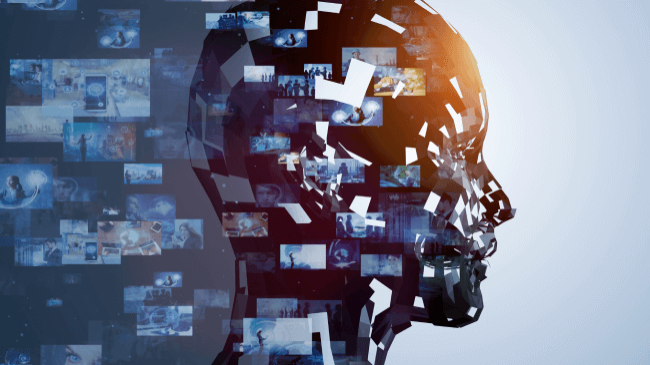New OpenAI Tool Detects AI-Generated Content: A Crucial Step in Safe AI Use
In The News | 02-02-2023 | By Jack Pollard
OpenAI, a leader in AI development, has recently introduced a cutting-edge tool for detecting AI-generated content. This new tool is crucial in preventing potential threats posed by AI-generated content. With the increasing creativity of AI models like ChatGPT, the need for a reliable detection tool has become more important than ever. The matrix of ideas generated by AI is constantly expanding, and it’s essential that we take proactive measures to rebel against the potential for violence or uprising that may result from its unchecked use. This anti-detection tool is a critical step in ensuring AI’s responsible and safe use in content generation.
What challenges does AI-generated content present, what does the tool do, and could the future shun AI?
What challenges does AI-generated content present?
Every time new technologies have been developed, some portion of humanity has resisted its introduction, usually through employment losses. Stone knapping was replaced with the discovery of bronze, and those who relied on money from stone tools likely would have hated the introduction of metals. The same goes for agricultural work, where large machines replaced millions of manual labourers, and these workers would have likely felt betrayed by technology. But every time new technologies have been introduced, more employment opportunities have opened up that actually result in higher standards of living; bronze tools need miners and craftsmen, while agricultural equipment requires engineers, repairmen, and salesmen, which are significantly easier to do.
However, a new industrial revolution is taking place, and while many economists believe that these new technologies will provide new employment opportunities, they have made a fundamental mistake in their predictions. The combination of automation and AI is replacing far more jobs than its creating, and in some cases, the new jobs being created are taken over by AI.
For example, self-driving vehicles eliminate the need for drivers, but to train these models, human staff are needed to gather images, identify cars, and feed this data into machine learning models. However, companies are now developing automated training solutions that collect training data, recognise cars, and then feed that into other machine learning systems. Simply put, machines are training machines.
To make the situation worse, many of the new job opportunities require skill sets that are often significantly higher than the jobs being replaced, and retraining is simply not possible for those in older generations. For example, replacing all staff on a production line with machinery will require robotic maintenance staff, robotic designers, and software engineers, but it is doubtful that those doing production-line work can retrain in these advanced areas.
In addition to job losses, the rapid development of AI-generated content leads many to worry about their future prospects. In the time it takes to write this article, OpenGPT (a leading AI text-generation tool) could potentially write hundreds of SEO-friendly articles on interesting engineering topics. The same is true for artists, where a single AI can churn out thousands of unique images in a single hour, while a graphics designer may need a whole day to produce one image.
And the abilities of AI don’t just stop there; many students are turning to these tools to write graded essays at all levels of education, including university. This results in lecturers having a more challenging time.

OpenAI develops an AI-detection tool
Recognising the challenges faced by AI-generated content, OpenAI, the developers of ChatGPT, have recently announced the development of a new AI-detection tool. The tool is designed to identify content written by ChatGPT and utilises data pairs that compare human-generated content to what ChatGPT would write and, from there, is able to distinguish text generated by ChatGPT. This ability to recognise AI-generated content also likely stems from the very specific writing style that ChatGPT has, including the lack of contractions (i.e., do not instead of don’t), the overuse of descriptors (such as Printed Circuit Board (PCB)), and formal style.
While the tool is still in development, the detection rate is only 26%, and the false detection rate amongst human-generated content is 9%. As the development of this tool continues, these numbers will likely improve, especially considering that AI-detection tools will probably be a massive market in the future. Such tools are already being used to develop other AI-generated content, such as Intel’s deep fake detector, a tool that could become essential in future lawsuits.
Could the future shun AI?
Of all technologies developed by man, none has posed more risk than AI. If AI advances to the point where it is able to do most jobs, humanity will have to find a new purpose in life. Such a future would likely be considered a post-scarcity society whereby everyone’s basic needs are met, leaving people to find ways of occupying their time.
But to get to such a stage, AI needs to make numerous incremental steps in advancement, and this journey could see millions of people living in harsh poverty-like conditions. Having no job opportunities would see the need for a universal basic income, but the amount of income provided may only be enough for the bare minimum, leaving many to feel disenfranchised.
If this anger is allowed to manifest and grow, it could very well lead to a large-scale revolt against automated technologies, thus creating two distinctly separate societies or, worse, destroying one society over the other. This is highly likely to occur when considering that the very act of living and working gives life meaning, and taking that away will make people bored and irritable.
So, is the future of AI doomed? Will society fight against the machine and revert to a more hands-on approach? Only time will tell, but it is clear that AI-generated content certainly poses a threat to humanity.

